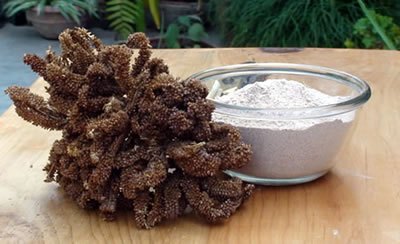
It is a miracle super seed
In this era of over processed and refined foods, it is a miracle that we have this super seed in its natural form! This may be due to the fact that millet has not been as popular to the Western world as it is to Asia and Africa. In America, just like in most Western countries, millet is commonly associated with bird seeds and animal feed. It is often used in bird feed mixtures. Let’s not forget though that millet was grown by the lake dwellers of Switzerland during the Stone Age and is still popular in certain parts of Eastern Europe where it is made into kasha and other dishes.
For centuries millet was a prominent crop and a staple food in some parts of China, India, and Africa, also in Greece, Egypt. Some believe it was one of the first grains to be cultivated tracing it to China around 2,700 BC. Grown in Gaul, millet was also eaten by the Sumerians, Etruscans, and the Romans. Millet has been a staple food of many communities for centuries all over the world; even before rice and wheat came to dominate the dining table and it is still a source of nutrition and subsistence income to many! Millet is a treasured secret from our ancient ancestors; having been used throughout the ages, across many countries, both for food and as an exchange for other
commodities!
Types of Millet
There are hundreds of varieties of millet most of which are not used for human consumption. In fact even sorghum is usually damped in this group.
The five main popular ones used for human consumption are: Finger Millet, Proso/common, Foxtail millet, little millet and Pearl.
Pearl millet also known as bulrush, cattail millet, spiked millet, bajra (India): (Pennisetum typhoideum), comprises 40{891a5681f0bc32265372dbd2463e6cefea901f03f275f16c5adce366b4a55218} of the world production. It is a tall, annual grass of Japanese barnyard millet, shanwa
(Japan), kheri (India): (Echinochioa frumentacea or Panicum crus-galli) It is cultivated in warm regions for use as food or forage. The grain is ground into meal and made into porridge (Japan and Korea,) but used for animal feeds in
America.
Finger millet, also called African millet, wimbi, bulo, ragi (India): (Eleusine coracana), consists of five spikes that look like fingers in the head which sometimes curve from a central point. Finger millet is
believed to have originated in East Africa and taken to India around 1000 BC. It has the best storage properties of all the millets.
Common or Proso millet is also known as: hog, Indian, or corn millet, broomcorn, proso (Russia): (Panicum miliaceum) It is believed to have originated in India, but has been cultivated since prehistoric times. It
spread through Asia to China, where it soon became one of the most sacred grains, though now holding a lower place than rice. Common millet arrived in Europe before 2000 BC and was used mainly for porridge and rough, unleaved bread.
Foxtail millet: (Setaria italica or S. chaetochia): some records show that it originated from China while others indicate that it was from Africa!
Other minor millets:
Little millet, Kodo millet, Guinea millet, Browntop millet are the minor millets but sorghum and teff are also somes grouped with millets.
Some types flourish in hot dry climates that are not favorable to many other crops like rice or wheat, that is why it is a prominent crop in many parts of Africa and the Indian subcontinent where the crop covers acres and acres of land.
Uses of millet:
Millet is used for many breakfast dishes, to make flat bread like roti, pancakes and bread when mixed with other grain flours. Millet and sorghum are also used to make wine and beer. It was and still is used in a variety of dishes from bread to couscous, cereal, cooked dishes and as a fermented beverage. It is also used for animal and bird feeds.
Millet makes very easy dishes suitable for everyone. It is especially good for weaning and for toddlers. It makes very delicious porridge and soups. It is also used for posho/gruel/kalo which may served with a variety of sauces to make a complete meal! Millet can be sprouted for use in salads, sandwiches and rolls.
Millet flour produces: Light smooth porridge which may be combined with quinoa, soy flour, milk to provide a rich complete breakfast. It makes light, dry, delicate baked goods and a crust that is thin and buttery smooth. For yeast breads up to 30{891a5681f0bc32265372dbd2463e6cefea901f03f275f16c5adce366b4a55218} millet flour may be utilized. It must be combined with flours that contain gluten for the bread to rise.
Millet seeds may be added whole and raw before baking for a crunchy finish in baked dishes and breads.
Milletpower is made from Finger Millet naturally grown in Uganda, the Pearl of Africa. It grows in fields that feed from the source of the Nile. Unlike most grains which are grown on a large scale this millet from Uganda is grown by local individuals who depend on it for food as well as a susistance crop. Millet plays a very important role both in nutrition and as a subsistent crop. It is one of the staple foods for most tribes and it is also used as a sacred crop in bride price and for other celebrations It is quite unfortunate that very few people know and appreciate the nutritional benefits of this delicious liyyle giant. Wake up, grab the opportunity and save this super seed from disappearing and from the ills of this modern world. Enjoy a delicious complete meal without jeopardizing your health.



